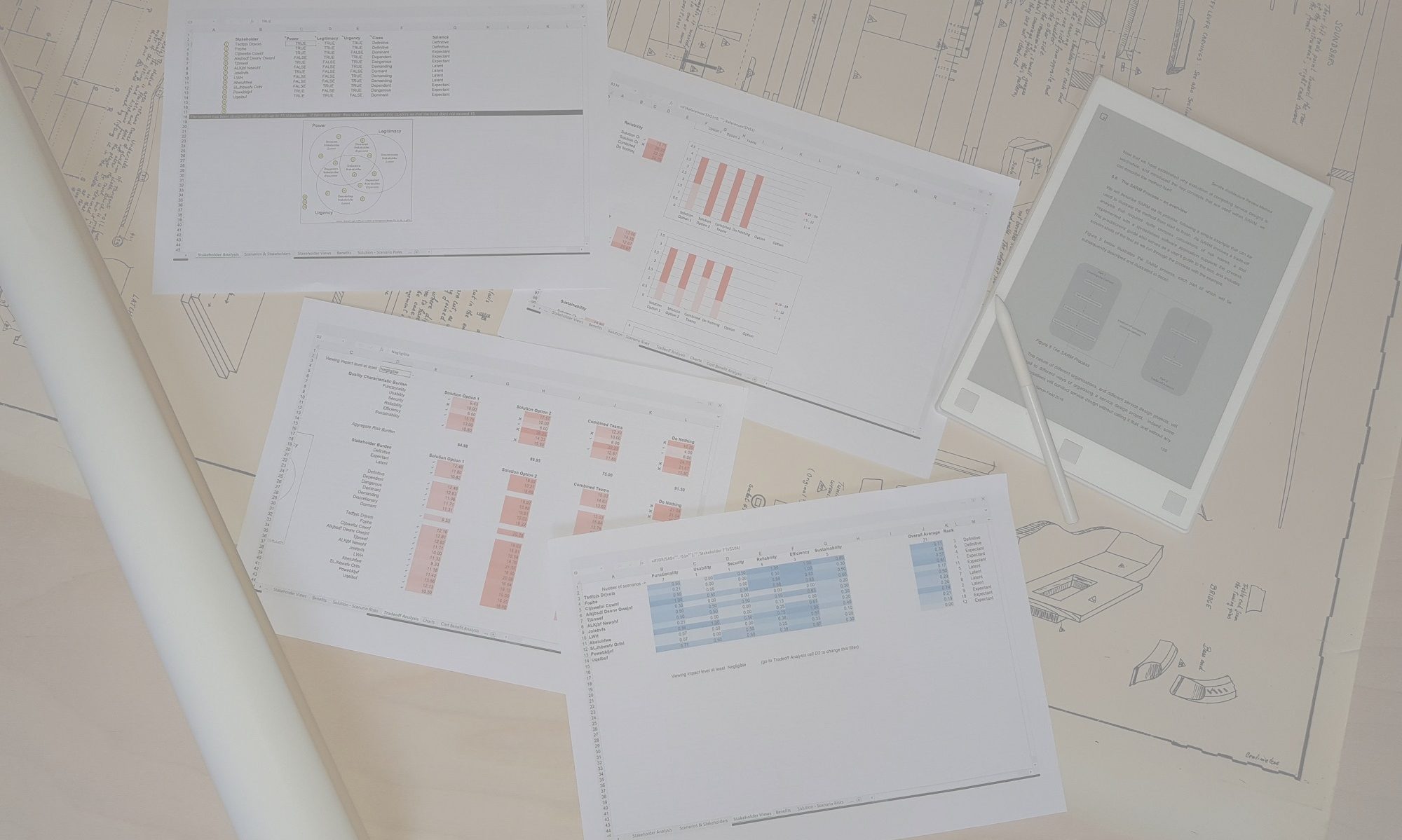This worksheet captures the outcome of the ‘architecturally significant requirements and ‘linking requirements to stakeholders‘ activities of Part 1 of the SARM Process. The linked pages above contain details of how to conduct those activities. This page focuses on the use of the corresponding worksheet in the SARM spreadsheet tool.
Begin by populating columns A, B and C. Each row represents one architecturally significant requirement identified in the workshop, and there is capacity in the worksheet for up to 100 requirements. There is no provision to increase this number, and you should not insert rows in the worksheet, as this will affect the functionality of other worksheets in the spreadsheet.
A description of the requirement is entered in the first available cell in column C. This should be a one or two sentence description, and the cell will wrap the text and grow with your description. Column A is then used to select the Quality Characteristic that best characterises the requirement. If you feel that more than one might apply, make a choice by determining which is dominant. The dropdown in Column B is automatically populated according to the Quality Model, and is used to select the more precise sub-characteristic that best characterises the requirement.
Column D is used to capture the agreed level of Impact, which describes the impact if the service or solution fails to satisfactorily achieve that particular requirement. This is the Impact dimension of the Risk Model.
The remainder of the worksheet contains a large matrix, with the rows representing the scenarios, and the columns representing the stakeholders. This part of the worksheet is optional, but strongly recommended. If you don’t need to view the results of the analysis from the perspectives of different stakeholders, then you are finished with this worksheet and can move on to the next one.
However, for many projects or initiatives, it is really helpful to be able to see how competing architectures might affect different stakeholders in different ways. If you want to be able to see this, you need to complete the rest of this worksheet starting with identifying the stakeholders whose perspectives you are interested in. Enter the names of the stakeholders or stakeholder groups in row 3, starting in column E. You can enter up to 15 stakeholders, finishing in cell S3. The process of identifying stakeholders is described in the ‘identifying stakeholders’ activity of part 1 of the SARM process. One particular approach to analysing and mapping stakeholders is described in more detail here.
For each requirement / stakeholder combination, the dropdown in the cell gives you two choices: No Interest or Interest. The first option is represented with a blank cell, rather than the words ‘No Interest’. This helps to keep the worksheet more readable. In a complex SARM analysis, this can become quite a large matrix: one hundred requirements and fifteen stakeholders means a matrix with 1,500 cells. It is not easy, in such a case, for workshop participants to see if the contents of the matrix ‘look right’. To answer this question, move on to the next worksheet, ‘Stakeholder Views‘.

